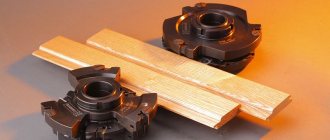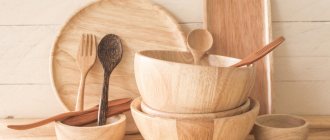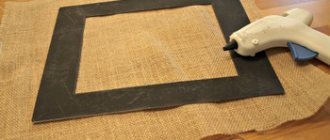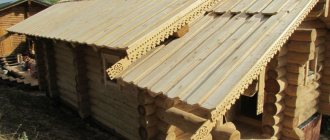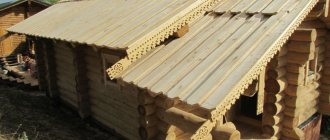A business producing wooden utensils can be a profitable investment even for those entrepreneurs who do not have large funds to organize their business. The relatively low cost of the starting material, the ability to engage in production at the initial stages at home, the growing demand for such products, a diverse range and types of wooden utensils that can be made - all these factors can contribute to obtaining a good income from starting a business.
Our business assessment:
Starting investment - 100,000 rubles.
Market saturation is low.
The difficulty of starting a business is 4/10.
Is it difficult to start making wooden tableware?
How to start the production of wooden utensils from scratch, where to start, are there any organizational difficulties and can this type of business generate income?
This type of business activity has one main advantage - the raw materials for making wooden utensils do not have a high cost, and therefore there is no need for large expenses at the initial stage of production. As a basis for small items such as spoons, forks, and spatulas, manufacturers often even use woodworking waste, which they sell at a very low cost or even give away for free.
The production process itself is also not complicated - wood is a relatively soft material, and you don’t need to make a lot of effort or use expensive equipment to give the product the required shape. As practice shows, handmade products are valued even much higher than those whose production is almost completely mechanized. After giving the product its shape, further processing consists of coating the surface of the utensils, for this purpose using varnish for wooden utensils, as well as applying various patterns to give the products a more attractive appearance or increase their value.
Permits and documents
Business registration
If you intend to create 2-3 products for sale per month, then this cannot be called a business - it’s a hobby.
But with large production plans and hiring assistants, you need to register yourself as an individual entrepreneur. To do this, contact the tax office with a package of documents. When registering, indicate OKVED codes 16.29.12 Production of wooden tableware and kitchen utensils and 47.91 Retail trade by mail or via the Internet. Choose a simplified tax system or switch to a patent.
List of basic documents for individual entrepreneur registration
- Application for state registration of an individual as an individual entrepreneur (form No. P21001)
- Copy of Russian passport
- Receipt for payment of state duty
Distinctive properties of wooden utensils
The growing popularity of products made from such material and the increase in the number of people wanting to buy wooden utensils for eating is associated with its clear advantages:
- This type of dishware does not break or crack when dropped, unlike glass, porcelain or ceramic;
- When using wooden utensils, there is almost no risk of cutting;
- Wooden utensils do not absorb any foreign odors from either food or other substances;
- When wood with a rich aroma is used as a raw material, when food is heated, part of this unique aroma is transferred to the products;
- Wood is a completely ecological material that is absolutely harmless;
- Wood has a fairly low thermal conductivity; therefore, food heated in it retains its temperature for a long time;
- Due to the fact that most of these dishes are made by hand, any client has the opportunity to become the owner of an original product that has no analogues;
- The price of wooden utensils is not high - therefore, their purchase is available to people with different incomes and wages.
Selection of raw materials for production
All existing methods for making wooden utensils primarily involve choosing a high-quality material, the properties of which will ensure the strength and durability of the future product. What kind of wood are utensils made from? It is worth understanding that for the production of wooden utensils you cannot take the first material you come across - most often the types of tree species used are linden, aspen, juniper and pear; as an option for more exotic ones, bamboo is widely used. First of all, this choice is due to the fact that they make it easy to cut products of the desired shape and configuration, without breaking or deforming.
Alternatively, you can use any other types of rocks, and if you use softer ones, it will be easier to process them, but on the other hand, harder rocks have less moisture permeability properties and, as a result, will last longer, maintaining their original appearance for a long time. In any case, coniferous trees should never be used. The choice of part of the tree is also of no small importance - it is best to use the widest, lower part of the trunk; in addition, the tree should not be dead wood - such a factor will not allow making high-quality dishes from it.
Homemade wood lathe
Discussion: 19 comments
- Vitaly:
11/07/2011 at 7:47 pmHere’s a question: is it possible to pick out the inside of the scoop not with a chisel manually, but with some kind of power tool. I find it very difficult to make a spoon this way.
Answer
Nikolay:
12/08/2011 at 9:14 pm
I think you can grind it with a round cutter using a drill or screwdriver. Only it will become very clogged... But you can try.
Answer
- Yuri:
12/25/2011 at 12:26 am
In fact, it looks more difficult than it actually is

